
Interesting Variations /// 33 RPM discs
Developed by Serge Pelletier, Piers Hemmingsen and Fred Young
The Beatles were very popular, so obviously, their albums were pressed in large quantities over many years - pressed and re-pressed , following demand. Capitol, like every other large company, modified its corporate image and fabrication methods as they evolved over time; changing their logo, labels, legal disclaimers and fabrication subcontractors. Put all this together and you end up with a collection of many different variations of a same album, spread over a period of 25 years.
From new labels to small design mistakes, listing Beatles Canadian variations could take up a 500 page book for LPs alone! This page does clearly not attempt to list all of them, but rather give a glimpse of how interesting it can be to pay attention to these subtle details, and understand their historical significance.
For a complete guide of all Canadian variations of Beatles LPs, please refer to our Definitive Beatles Canadian LP Collector's Guide, available on September 1st, 2013 in digital format and hard copy. Meanwhile, browse through these few interesting examples of LP variations found in their Canadian discography.
Beatlemania!
Unbanded side 2
A very odd variation exists for this album on the black rainbow label. This curiosity is a no brackets RCA label with -2 on one side and -5 on the other (used up old stampers?). The main odd thing about this record is that the last two tracks on side 2 are "unbanded", as there is no visual seperation between the tracks! If you look closely, there are only 6 visible tracks for 7 actual titles. What happened here is unknown, but very interesting nonetheless! This record was sealed in a thick lose plastic.
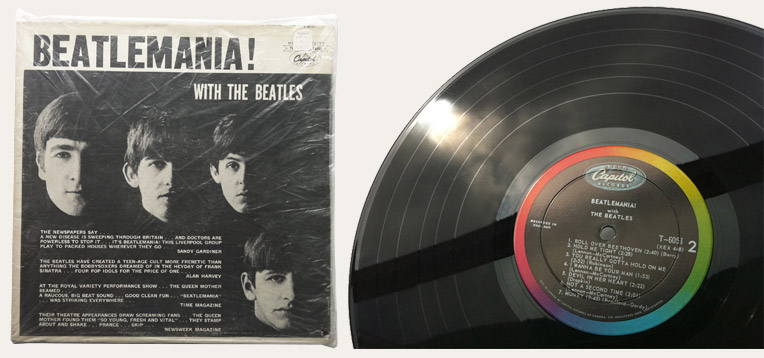
Twist And Shout
Early covers
Here are two jacket variations from early 1964. The earlier version has no dash in the 6054 catalogue number on the top seam, with the number slightly smaller in size, and no Parr's logo on the front cover. Soon after, blueprints were corrected to add the dash in the catalog number, and to add the Parr's logo ont the front slcik. A few early copies featured an orange sticker on the loose wrap, and a free Beatles promotional photo. All of these copies contain the disc with XEX-455 and XEX-456 with no dashes in the runouts. Many thanks to Gilles Valiquette of Montreal for highlighting these earlier jackets.
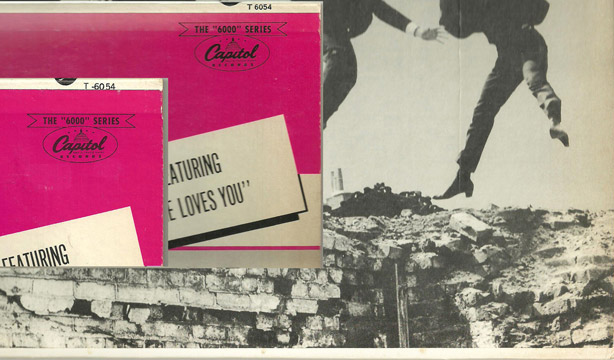
Long Tall Sally
Stereo banner cover
In 1971, Capitol re-pressed Long Tall Sally on the red target label. Oddly enough, these came in covers with a stereo banner, even though the album was still in mono only. This is the only time where stereo banner covers were used for this album.
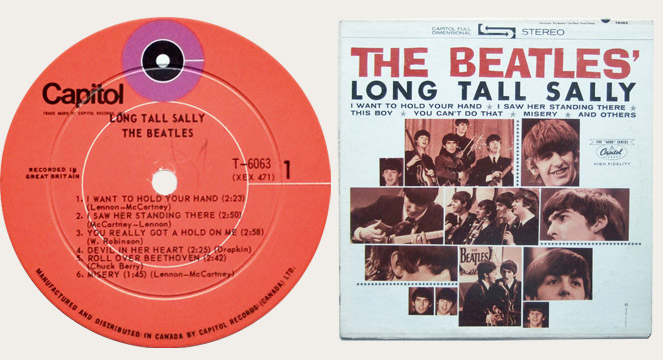
A Hard Days Night
Red, Black and Blue mono labels
In 1964, demand was so high for the new Beatles soundtrack album that the Compo plant used up other labels they had on hand in the warehouse, labels not originally intended for United Artists mono releases. Once the regular red labels stock was depleted, Compo used black lables normally used for stereo releases. Once these were also used up, Compo switched to blue lables normally used for a UA subsidiary. Red labels are the most common pressings for the mono copies, followed by a few black label mono copies and even fewer blue lable copies.
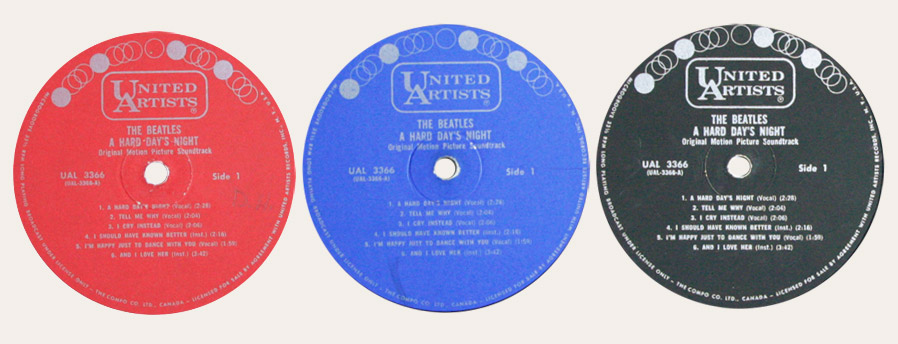
Something New
Mistake sleeve
A weird variation on the orange label has a mistake stereo front slick, but a mono back slick. The front slick has the word stereo in a white box and has an unusual printer logo in a blue square, while information at the bottom of the back cover is mistakenly written over other text.
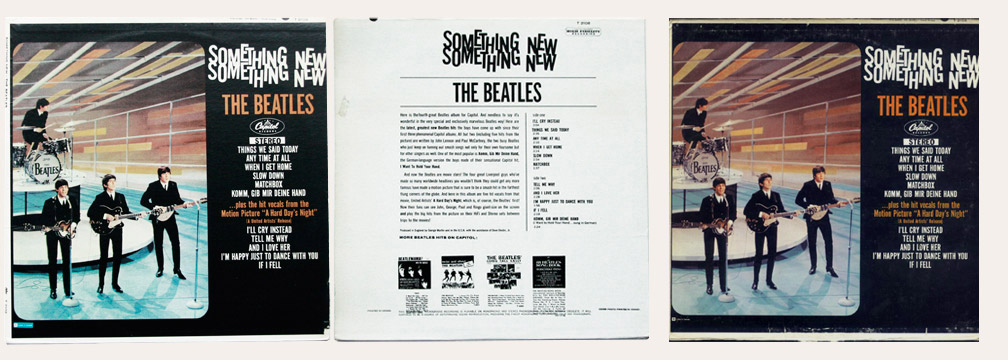
Beatles VI
Missing albums on the back
An odd variation of The Beatles VI omits the Canadian albums on the back cover. Images were not replaced by US records like on many other albums, but were simply removed, leaving an awkward blank space.
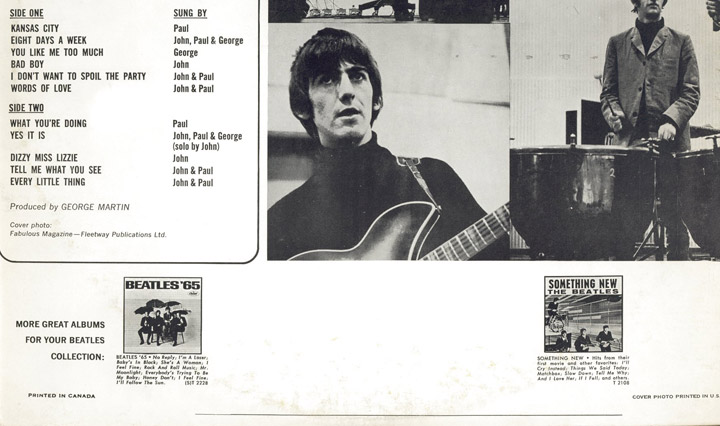
Gold Stamped Stereo albums
Beatles VI and Yesterday & Today
Some rare reissue LPs of these albums have the word STEREO stamped in gold on a mono front slick instead of having the usual stereo banner at the top.
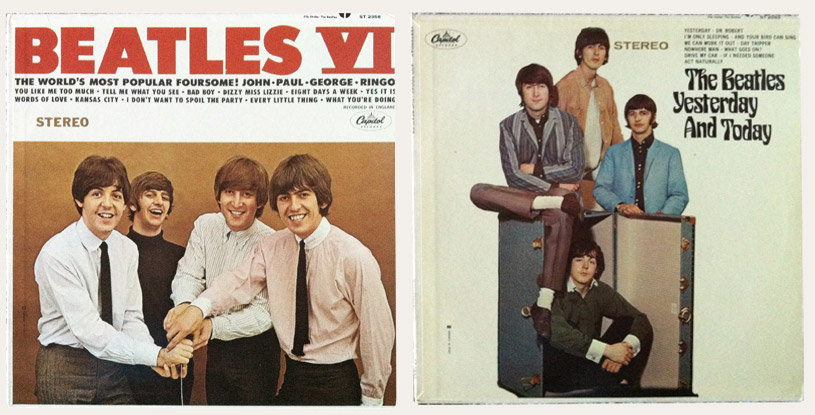
Help!
Full dot vs split dot
The rare 1967 stereo reissue with a Parr's logo witness the correction of the split dot on the top right cover. These dots were used to designate mono and stereo pressings - full dot for mono, and split dot for stereo. But Help! has carried a mistake full dot on its stereo releases since 1965. Only two years later did Capitol correct the mistake by finally putting a split dot on stereo releases of the album.
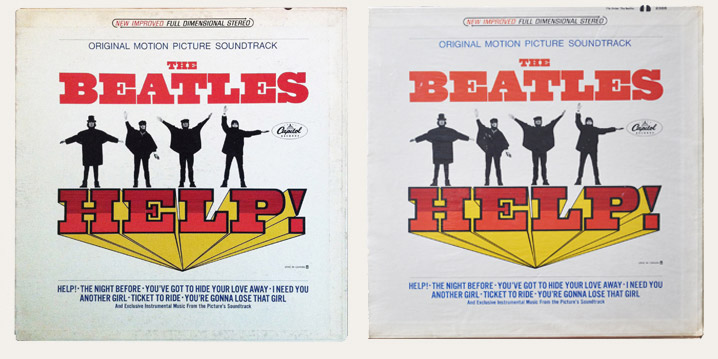
Rubber Soul
Labels with or without "The Beatles"
Rubber Soul pressings, both mono and stereo, featured the individual names of the band members on the label. Only later did the label also carry the name of the band "The Beatles". So, early non brackets pressings of the album are available with either labels featuring or ommitting the band's name, while all brackets label feature the name "The Beatles" on the label.
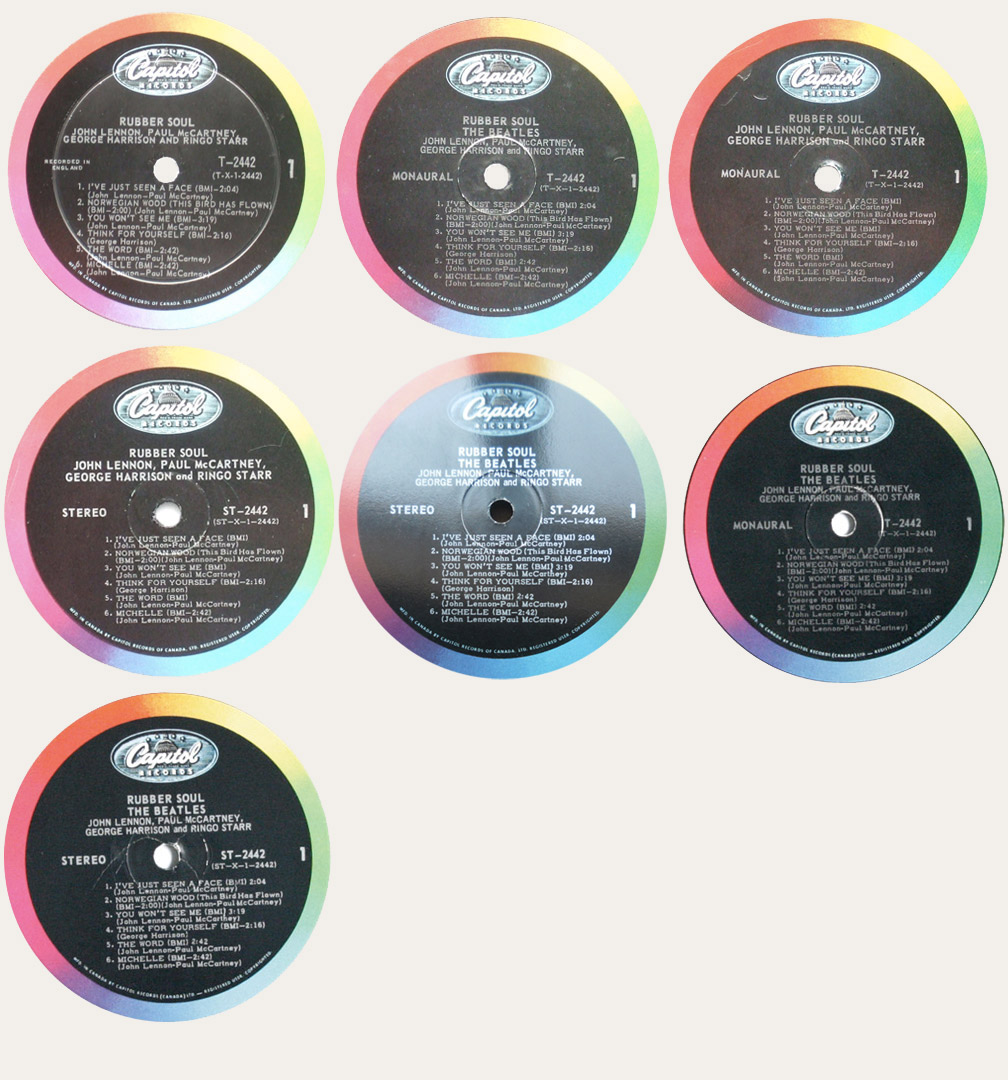
Yesterday and Today
Paste Over
A rare variation of this LP was an odd pressing that can be identified as a paste over. We can see through the front slick, the back slick that was printed and glued there first. It is unikely that this album is actually a butcher paste over because original Canadian butcher slick were laminated and would therefore make it difficult to paste over another slick.
For more details, read the article HERE
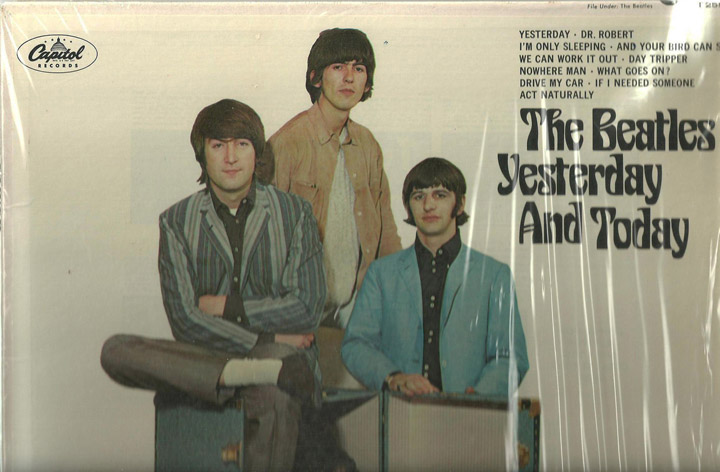
Meet The Beatles
Unique Canadian Mix
A unique Canadian variation of Meet The Beatles on the purple label features and odd mix of the song "Don't Bother Me". Indeed, an extra "Don't" is heard towards the end of the song. Only copies with the B-Side matrix number written "ST.2047.B." features this mix, while other purple label copies have the regular mix.
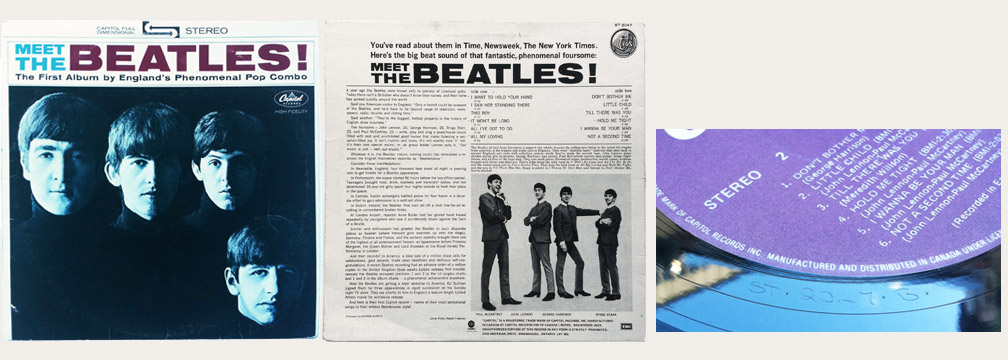
Sgt Pepper's Lonely Hearts Club Band
A little help from my friends
Early copies of both mono and stereo pressings of the album featured the mistake title "A little Help From My Friends". The Mistake was soon corrected to "With A Little Help From My Friends".
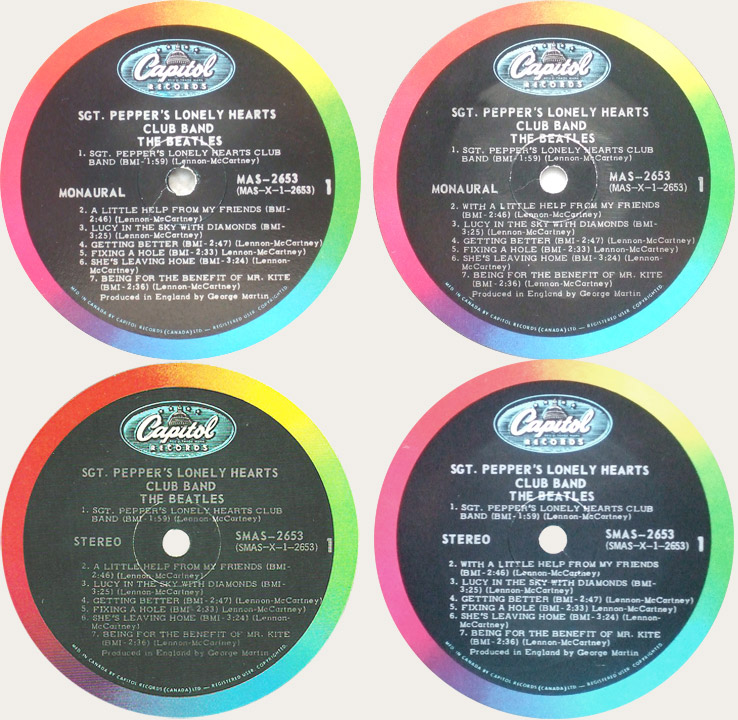
Magical Mystery Tour
Bold vs script "no you're not"
Early variations of the cover have "No You're not" in script font on the inside cover, while other copies have the phrase written in a regular bold typeface.
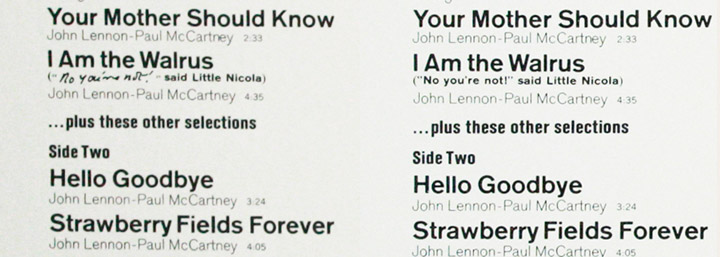
The Early Beatles
early Capitol logo differences
First copies had the "REGISTERED USER" information in the black part of the Capitol logo, while later reissues places this information to the left of the Capitol logo.
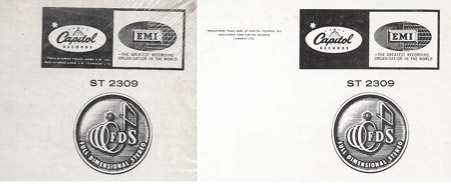
White Album
Canadian vs US imported covers
In November 1968, First issues of the album were sold in a canadian-made, un-numbered cover that was slightly smaller in size. Capitol also made their own larger photos (4 of them) and their own uncensored poster. Some other copies were sold in an imported US cover that was numbered. Numbered copies were found with both RCA and Compo pressings.
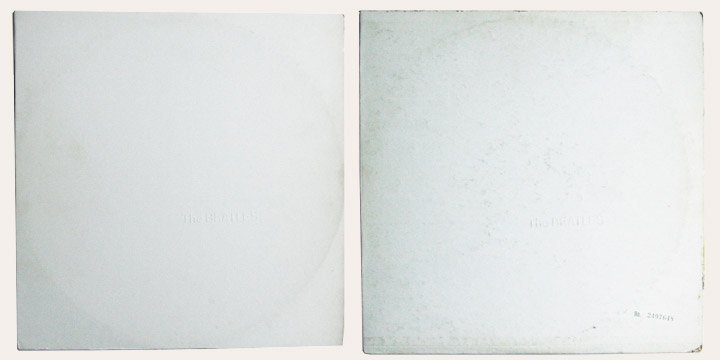
Abbey Road
Her Majesty ont he label
First issues of this album omitted the title "Her Majesty", while later Compo copies corrected the mistake by adding the song title.
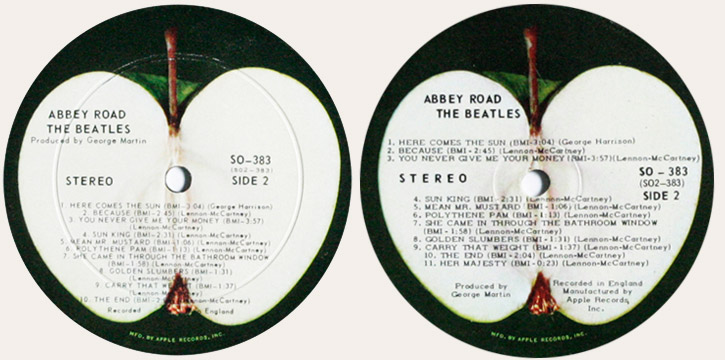
Very Together
Cover credits
Initial copies from November of 1969 used a rear slick with no printer’s markings that carries a photograph credit to just “Jean-Patrick Amish”. This credit was then corrected a few weeks later to add the names “W. Birkenfeld, C. Risch & Friends”; people presumably responsible for the concept of the “snuffed candle”.

The Beatles Again
title change
This album was set to be called "The Beatles Again", but the name was quickly changed to "Hey Jude". Although no cover has been constructed with the first title, both RCA and Compo pressings feature the original title. Later, both plants corrected their labels to the proper title.
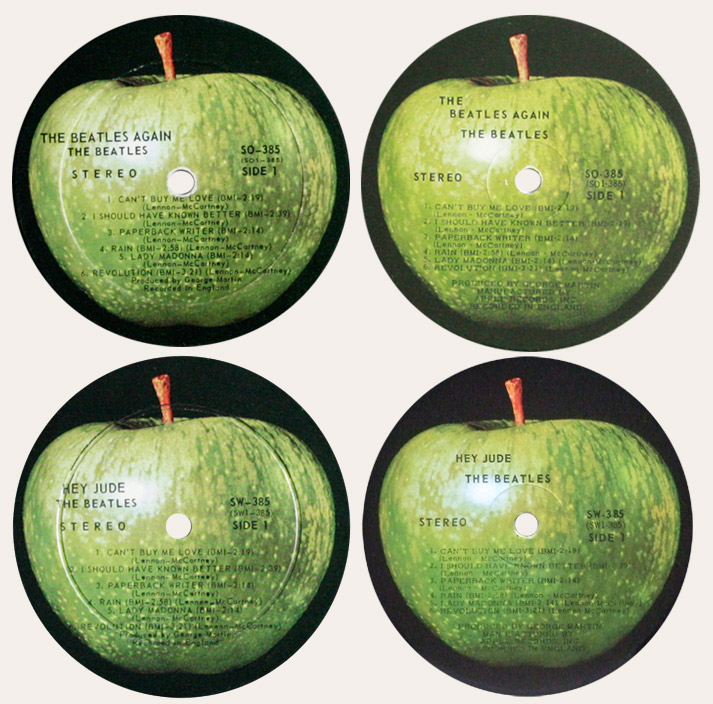
Let It Be
SOAL vs SW pressings
The Let It Be album was originally released as a box set numbered SOAL 6351. The box set was expensive and was sold only for a while, while the album remained available for quite some time. In 1972, the album was given a brand new catalog number (SW 6386), now being only available as a single record (no box set).
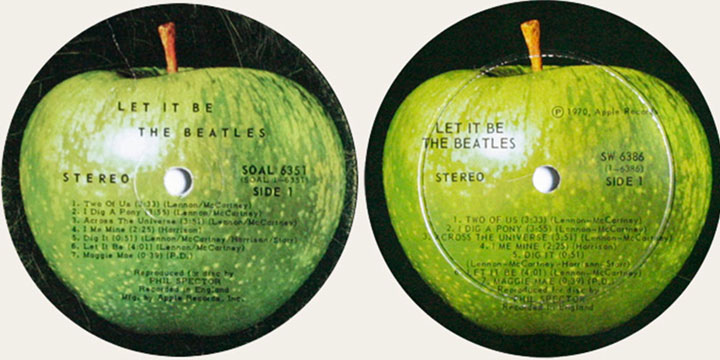
Copyright © 1999 - 2018
Capitol6000 & Hemmingsen Publishing
Piers A. Hemmingsen & Serge Pelletier. All Rights Reserved.